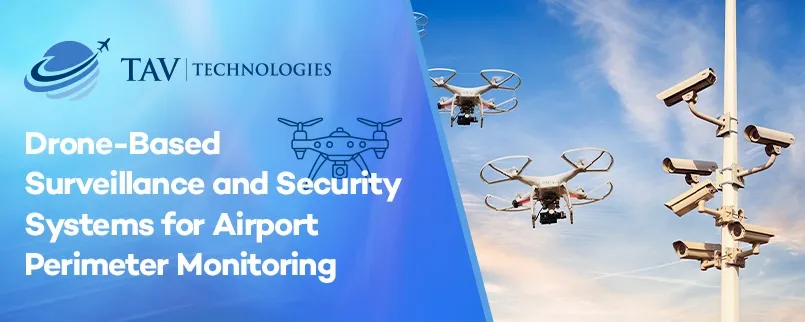
Aug 2024
As airport security continues to change quickly, it is crucial to maintain comprehensive perimeter monitoring. Airports present dynamic difficulties that standard monitoring systems are often unable to meet due to the sophistication of security threats. Drone-based surveillance systems are a novel approach that uses cutting-edge technology and real-time data processing to improve perimeter protection. This blog examines the advantages and possible applications of drone-based technologies that are revolutionizing airport perimeter monitoring.
Enhanced Coverage and Real-Time Monitoring
Drones offer unparalleled advantages in perimeter security by providing extensive coverage and real-time monitoring capabilities. Unlike stationary cameras, drones can quickly adapt to changing conditions and cover large areas with a single flight. Equipped with high-resolution cameras and thermal imaging, these drones can capture detailed images and detect suspicious activities, even in low-light conditions. This dynamic approach ensures that security personnel have access to comprehensive and current information about the airport's perimeter.
Advanced Threat Detection and Response
The integration of advanced sensors and artificial intelligence (AI) into drone systems significantly enhances threat detection. AI algorithms can analyze video feeds in real-time, identifying patterns and anomalies that may indicate potential security threats. For instance, drones can detect unauthorized personnel or vehicles approaching restricted areas, triggering immediate alerts to security teams. This proactive approach allows for swift responses and reduces the likelihood of security breaches.
Cost Efficiency and Operational Flexibility
Drone-based surveillance systems also offer cost advantages compared to traditional methods. Deploying drones can reduce the need for extensive physical infrastructure and lower long-term maintenance costs. Additionally, drones provide operational flexibility, allowing for rapid deployment and adjustments based on security needs. This adaptability ensures that airports can respond effectively to evolving threats and changing security landscapes.
Integration with Existing Security Systems
One of the key benefits of drone-based surveillance is its ability to integrate seamlessly with existing security infrastructure. Drones can be connected to central security systems, providing a unified platform for monitoring and response. This integration allows for coordinated efforts between drone operators and security personnel, enhancing overall effectiveness. For example, drone feeds can be incorporated into command centers, providing a comprehensive view of the airport's security status.
Challenges and Considerations
While drone-based systems offer numerous benefits, there are also challenges to address. Ensuring compliance with aviation regulations and privacy concerns are critical considerations. Additionally, maintaining drone battery life and managing data security are essential for effective operation. Addressing these challenges through robust planning and technology solutions will be key to maximizing the effectiveness of drone-based surveillance systems.
Next Steps: The Future of Drone-Based Security
The future of drone-based surveillance in airport perimeter monitoring is promising. Advances in drone technology, such as improved battery life, enhanced AI capabilities, and integration with smart technologies, are set to further strengthen security measures. As airports prioritize safety and efficiency, drone-based systems will play a pivotal role in shaping the future of airport security.
Offering enhanced coverage, advanced threat detection, cost efficiency, and seamless integration with existing systems, drones provide a comprehensive solution to modern security challenges. As technology evolves, their role in ensuring airport safety will only grow more critical.
